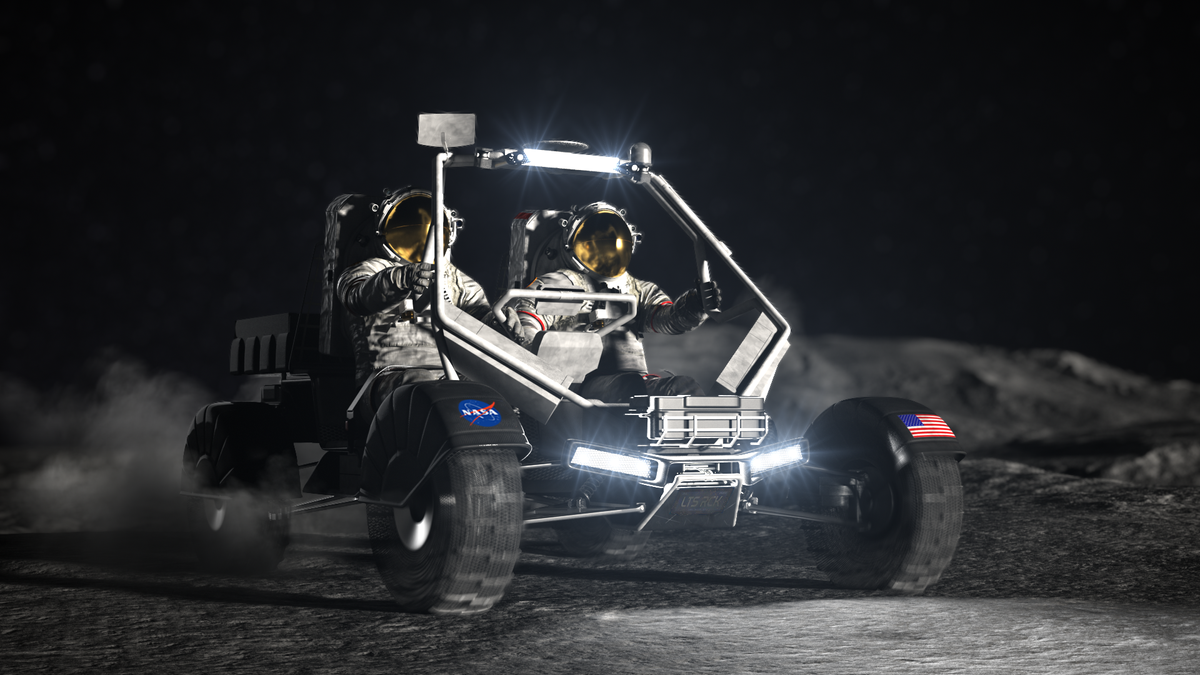After half a century, American astronauts stand at the brink of returning to the moon, marking a pivotal moment in space exploration. NASA’s ambitious Artemis missions, reminiscent of the Apollo era, aim not only to revisit the lunar surface but also to pave the way for eventual human exploration of Mars. Central to this endeavor is the development of a cutting-edge lunar terrain vehicle (LTV) to navigate the rugged lunar landscape.
The Need for Lunar Exploration Vehicles
Intending to facilitate crewed operations during upcoming Artemis missions, NASA initiated the quest for a next-generation lunar terrain vehicle (LTV) capable of traversing the moon’s uncharted south polar region. The envisioned vehicle, a fusion of the Apollo-era lunar rover and modern uncrewed Mars rovers like Perseverance or Curiosity, is poised to revolutionize lunar exploration. Equipped with robotic, remote operation capabilities, the LTV will enable scientific investigations and cargo transport even in the absence of astronauts on the lunar surface.

Companies Assigned the Task to Design Vehicles
Companies vying for the opportunity were tasked with designing vehicles accommodating two suited astronauts and featuring essential components such as a robotic arm. Moreover, durability in the face of extreme lunar temperatures, particularly in the water-ice-rich south pole region, emerged as a critical requirement. Notably, the presence of water ice not only sustains astronauts but also serves as a vital resource for potential rocket fuel, crucial for future missions to Mars.
How to Watch the NASA Announcement?
The eagerly anticipated unveiling of the companies involved in designing the lunar terrain vehicle will be broadcast live from NASA’s Johnson Space Center in Houston at 4 p.m. EST on Wednesday. Enthusiasts can tune in to various platforms including NASA+, NASA Television, the NASA app, and the agency’s official website. Additionally, the event will be streamed live on NASA’s official YouTube channel, ensuring widespread accessibility.
Progress Toward Artemis Missions: Challenges and Milestones
While the Artemis program holds promise for reshaping space exploration, it has encountered setbacks along the way. Delays, including technical issues such as a battery flaw on the lunar vehicle, have pushed back mission timelines. Nevertheless, efforts persist to maintain momentum and overcome obstacles.
Recent milestones, such as the successful moon landing by Houston-based Intuitive Machines and SpaceX’s advancements with the Starship rocket, signify progress toward Artemis objectives. Intuitive Machines’ historic achievement, coupled with NASA’s collaboration, underscores the growing role of private entities in lunar exploration. SpaceX’s strides with the Starship rocket, fueled by a significant contract from NASA, signal promising prospects for future crewed missions to the moon.

As NASA forges ahead with the Artemis program, anticipation mounts for the unveiling of the lunar terrain vehicle, a cornerstone of lunar exploration endeavors. Despite challenges, the collective efforts of NASA and its partners herald a new era of space exploration, marked by innovation and collaboration.
